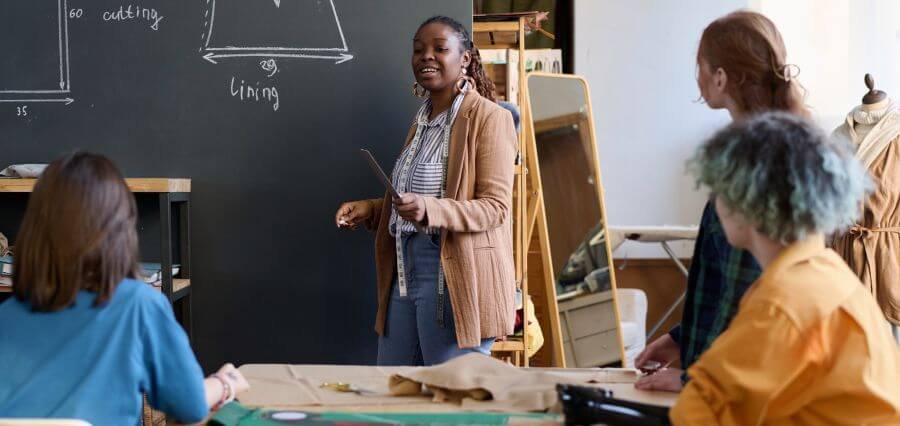As for the contemporary domain of education, effective methods to teach their students always concern educators. A highly effective teaching technique is learning scaffolding. Scaffolding is a type of temporary support to help the learners reach higher levels of understanding and competence. The process can be described as the breaking of complex tasks and building up gradually; hence, it transforms the manner of engagement in new material among students.
Concept of Scaffolding Learning
This is the origin of the term “scaffolding,” from construction, which is temporary support structures that support workers while they create a building. Similarly, in education, teachers offer critical support to their students as they learn new things. Support fades over time as the students grow competent enough to stand on their own and perform without help.
Learning scaffolding has three major components: tailored guidance, feedback, and structured activities based on learners’ current abilities. At the culmination, they find learners free to take charge of their learning journey for independence and self-confidence.
Benefits of Scaffolding Learning
The use of scaffolding learning strategies in the classroom offers a wide range of benefits. First and foremost, it enhances deep understanding. When information is broken down into smaller, manageable pieces, students are more likely to understand complex ideas. They do not feel overwhelmed but instead approach learning step by step.
Scaffolding further encourages cooperation. Group activities allow support from peers by having students learn from each other as they experience the material. Such interaction can foster better comprehension but also contribute to the overall feeling of belonging in a class, as if learning is done in company with others.
Another advantage of scaffolding learning is its adaptability to various learning styles. Each student is different in their strengths and weaknesses, and the approach can be adjusted using scaffolding. For example, a diagram or chart will be of much use for a visual learner, whereas kinesthetic learners are benefited by practical activities. By providing an opportunity to the different styles, scaffolding learning allows all the students to take part meaningfully in the process of learning.
Successful Scaffolding Learning Strategies for the Classroom
Educators can implement scaffolding learning strategies for the classroom effectively by using different techniques, making sure they meet their students’ needs.
One effective strategy is the use of modeling. This approach works very effectively in a modeling technique, wherein a teacher may use himself/herself to show a student a specific skill or task, illustrating for them how he or she accomplishes the skill. For example, when presenting a writing task, a teacher could write a paragraph in front of the students and describe thought processes and choices as he goes along. That clarifies what’s expected while also providing something tangible for them to follow as an example.
Another crucial strategy is questioning. Thoughtful questioning encourages students to think critically about the material. By asking open-ended questions, educators can prompt discussions that deepen understanding. For example, rather than simply asking for a definition, a teacher might ask, “How does this concept apply to real-life situations?” This approach encourages students to connect classroom learning to their experiences, making the material more relevant and engaging.
The Role of Feedback in Scaffolding Learning
Feedback is a fundamental part of scaffolding learning. It simply tells the student where they are and what they need to do better. Constructive feedback is specific, timely, and actionable. Students come to know what they have done well and what they need to develop further. Teachers can use one on one, written comments or group discussions.
However, self-assessment is also integral to scaffolding. It instills a feeling of ownership regarding the learning by letting students assess themselves. Students acquire metacognitive skills by identifying their successes and failures. Therefore, they would be able to track their comprehension and modify strategies according to that.
Gradual Reducing of Support
As students become independent, support must be gradually faded. Fading is the phase where the learners are expected to become more independent. In this stage, a teacher who might have given more guidance at first would, later on, concentrate on teaching students to become more independent. For instance, less direct instruction can be provided while increasing the task complexity.
The fading of support allows not only a gain in self-confidence but also equips learners for future problems with learning. This enables the learners to work through new topics knowing they will have the mastery of skills for independence.
Conclusion
In a nutshell, scaffolding learning is a dynamic and effective educational method that can significantly enhance the learning experience in the classroom. Breaking down complex concepts, providing targeted support, and gradually fostering independence can be achieved by educators to create an environment where all students thrive.
Using scaffolding learning strategies in the classroom, such as modeling, questioning, and feedback, ensures that each learner has the tools needed to succeed. As students become more confident and competent, they develop a lifelong love for learning, equipped to face future challenges with resilience and creativity. Through effective scaffolding, the classroom can transform into a vibrant space where knowledge is constructed collaboratively, and every student has the opportunity to shine.





